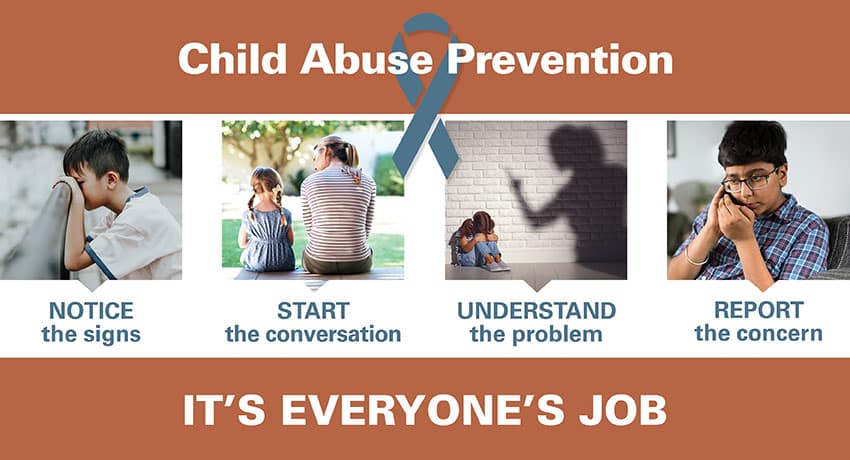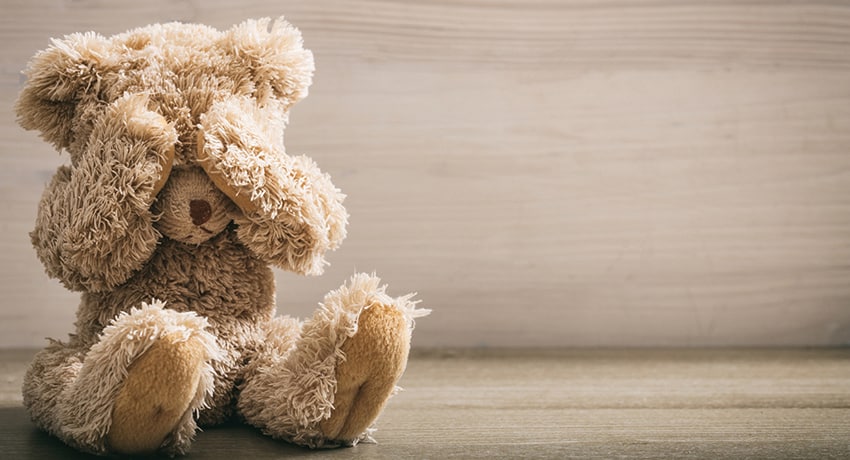Child abuse is a public health problem, with 1 in 7 children suffering from some form of abuse, according to statistics from the Centers for Disease Control and Prevention (CDC). Unfortunately, those numbers may be even higher.
“Child abuse is definitely underreported,” said Michelle T. Ruda, MD, child abuse pediatrician with the UT Physicians CARE Clinic – Texas Medical Center and assistant professor of pediatrics at McGovern Medical School at UTHealth Houston. “This is why it’s everyone’s job to help prevent child abuse.”
Much of the responsibility has fallen on the shoulders of educators or health care professionals, but child abuse prevention needs to be a larger, community effort.
“Helping children is everyone’s responsibility — neighbors, church members, family members, everyone,” Ruda said. “Children often don’t have a voice, which is why it’s important for all of us to be more aware of the potential signs that abuse may be occurring.”
For Child Abuse Prevention Month in April, learn everything you need to know from this specialist.
Notice the signs
There are five different types of child abuse: physical, sexual, emotional, neglect, and medical.
Depending on the form of abuse, some indicators are physically evident while others are emotionally discreet. However, anything that is abnormal and suggests distress or suffering in a child is a sign.
The doctor shared some signs:
• Delayed development or not meeting childhood milestones
• Bruises and injuries that do not match with a child’s age and/or story
• A change in behavior (more anxiety, aggression, depression, hyperactivity, etc.)
• Socially withdrawn, lack of confidence and self-esteem, and/or loss of enthusiasm
• Poor hygiene
• Inadequate clothing for the weather
• Stealing or hoarding food, or stealing money for food
• Not wanting to leave school when it is over
• Frequent absences from school
• Avoiding certain people or situations
Start the conversation
If you suspect a child is being abused, start the uncomfortable conversation.
“Talk with the child and ask if they are okay. Ask open-ended questions,” Ruda said. “A child may not disclose anything for fear of retaliation or shame, but let the child know they can come to you.”
Also, reach out to the parents and speak to them in a sincere and caring manner.
“Talk with the parents, or parent, about what you are noticing and ask if you can help,” the expert said. “Friends, neighbors, or family members may be able to open the door for a child who needs help.”
If you are terribly concerned about a child’s safety and well-being, trust your instinct and report it immediately.
Understand the problem
Child abuse often happens in households where a parent is struggling with a problem, and the inability to cope transfers to a child.
“I don’t believe most parents wake up thinking, ‘I’m going to abuse my child today,’” Ruda said. “A parent might have been abused as a child. Another parent might have untreated mental health or substance abuse problems. Another might not have the support system or resources to adequately care for the family. These aren’t excuses to hurt a child, but the reason isn’t always straightforward.”
One way to help a child is to refer a parent to the resources or services the family may need.
“A big part of our job here at the CARE clinic is to connect struggling parents with resources and services. Whether it’s counseling, food assistance, medical assistance, or another type of service, helping the parent will often help the family and child,” Ruda said.
Report the problem
If you believe a child needs immediate assistance, do not hesitate to report it.
“Sometimes people don’t report child abuse because they’re afraid of causing more harm than good or breaking up a family. A child may be removed from the home until more information is known, but it’s important to trust the process,” Ruda said. “Child welfare agencies and specialists like myself aren’t trying to hurt parents or families. Oftentimes, with intervention and assistance, families can be strengthened and reunited.”
For more information on child abuse prevention, go to the CDC website. To report child abuse, call the Texas Abuse Hotline at 800-252-5400.
For parenting resources, visit the following websites: No Hit Zone, and Parenting Help.




